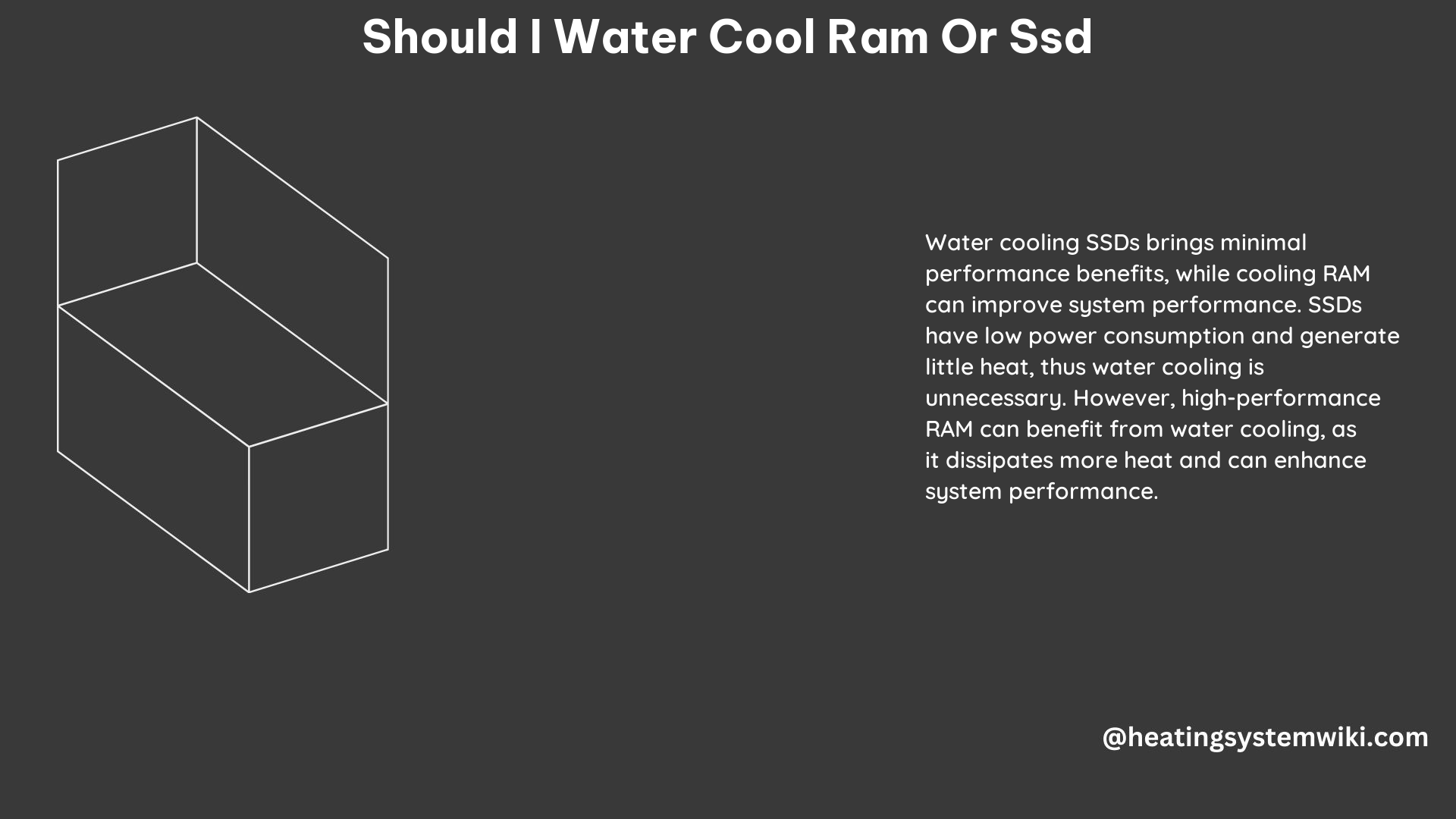When it comes to building a high-performance PC, the decision to water cool RAM or SSD is a complex one that requires careful consideration of various factors. While water cooling is commonly used for CPUs and GPUs, the benefits of water cooling RAM or SSD may not be as significant in most cases.
Understanding Heat Generation and Cooling Needs
CPUs and GPUs are the primary components that generate the most heat in a PC, and they often benefit the most from water cooling. This is because these components can experience significant thermal throttling, which can negatively impact their performance.
On the other hand, RAM and SSDs typically do not generate as much heat as CPUs and GPUs, and they are not as prone to thermal throttling. As a result, the potential performance gains from water cooling these components may be relatively small.
Water Cooling RAM: Pros and Cons

Water cooling RAM can be beneficial in certain scenarios, such as when building a high-performance system with tight thermal constraints. By reducing the overall system temperature, water cooling the RAM may help improve system stability and potentially unlock additional overclocking headroom.
However, the actual performance gains from water cooling RAM are often negligible. RAM modules generally operate within a relatively narrow temperature range, and they are not as sensitive to heat as CPUs and GPUs. Additionally, the cost and complexity of implementing a water cooling solution for RAM may outweigh the potential benefits for most users.
Water Cooling SSD: Pros and Cons
Water cooling an SSD is even less common and generally less beneficial than water cooling RAM. SSDs do not generate as much heat as other components, and they are not typically subject to thermal throttling. In most cases, the performance of an SSD will not be significantly improved by water cooling.
That said, there are some scenarios where water cooling an SSD may be beneficial. For example, in a high-performance system with tight thermal constraints, water cooling the SSD may help reduce overall system temperatures and improve stability. Additionally, some SSDs may be more prone to thermal throttling than others, and water cooling may help alleviate this issue.
Technical Specifications and Examples
When it comes to water cooling RAM or SSD, the technical implementation typically involves using specialized water blocks designed to fit over the components and provide additional cooling.
For water cooling an SSD, one example is the Corsair Hydro X Series XM2 water block. This water block is designed to fit over M.2 NVMe SSDs and features a copper baseplate and a micro-fin array to maximize heat transfer. It is compatible with a variety of different M.2 SSD models.
For water cooling RAM, an example is the EKWB EK-Velocity D-RGB Nickel + Plexi water block. This water block is designed to fit over DDR4 RAM modules and features a nickel-plated copper baseplate and a clear acrylic top plate to showcase the RGB lighting on the RAM.
Conclusion
In summary, the decision to water cool RAM or SSD should be based on a careful evaluation of the specific hardware being used, the cooling needs of the system, and the overall goals of the user. While water cooling these components may provide some benefits in certain high-performance or aesthetically-focused systems, the potential performance gains are often relatively small compared to the cost and complexity of implementing a water cooling solution.
References:
